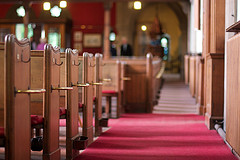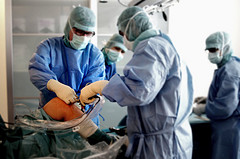Liturgy
My Advent hymn listening is about to wind down as I start listening to Christmas carols on the 4th Sunday of Advent. Since traditional Christmas carols played a part in my conversion I am really looking forward to this. Listening to Advent music only for most of Advent is only a couple year tradition for me, but partly I find for myself the delay in listening to my favorite carols lets me appreciate them even more. Plus I have found that Advent hymns are also pretty awesome especially as performed on Advent at Ephesus.
I have a fairly good collection of these carols once on a CD and now living in the cloud. Unfortunately the production values on too many of them are not very good. Especially ones involving choirs. I remember being disappointed after buying the “John Rutter Christmas Album” for the Cambridge Singers. While the hymn selection was excellent, the sound is low and just not that sharp.
So I am always on the lookout for a higher quality collection of Christmas carols that mixes the familiar with the lesser known. I received Christmas in Harvard Square for review and was happy to find it perfectly fulfilled my requirements.
The album is performed by [The Boys of St. Paul Choir School][http://stpaulchoirschool.com]. This is the only boys’ choir school in the United States of America and students attend full time between the forth and eighth grade. I just looked at the information regarding this album on Amazon and found that they used John Rutter & Sir David Willcocks arrangements and that the schools is based in Cambridge. So after I just complained about a specific album I found this a bit ironic.
Now I only gave this album one listen or else my personal Christmas carol embargo would have fallen and I would be playing them 24/7. One listen was certainly enough to make me love it as the boys voices come shining through with high production values. The majority of hymns on this album are the lesser known, or at least the lesser played. Still all of these selections should be better known. All I know if that I am going to give this specific album a listen daily just before and during Chrismastide.
Another polished well-produced piece of sacred music is O Day Of Resurrection! – Liturgy of the Hours for Sunday by the [New Camaldoli Hermitage][hermitge] a group of Benedictines located at Big Sur. These recordings of the Liturgy of the Hours in plainchant is captivating. I found it to be perfect background music while doing spiritual reading.
On another note (pun always intended) I sometimes hear complaints about Christmas carols being played early in stores and shopping centers. Now normally this is a complaint I could appreciate, but I have been thinking that perhaps we shouldn’t really grumble about it. At least Christmas carols are still being played in public and political correctness has not yet wiped it out for fear of offending the ear of the non-Christian. Sure the mix of these songs in public lean more towards the Christmassy secular songs, but actual carols slip through repetitions of “Grandma got run over by a reindeer.” So I have decided to enjoy this while it lasts.

Nine years ago I decided to create my own Advent Wreath graphic instead of just using the normal animated gif that I had used previously. If you would like it for your own blog you can use the html code below. I will replace the graphic each week so that it correctly shows the number of candles that should be lit. On Christmas I will change it to another graphic I created for Christmastide.
<img src="http://www.splendoroftruth.com/curtjester/wp-content/uploads/Advent/curtjester_advent.gif" width="170" height="189" />
Via Brandon Vogt:
This morning Fr. Robert Barron launched AdventReflections.com, a place where people can sign up to receive FREE daily reflections throughout Advent.
Each day, from November 30 until Christmas Eve (December 24), Fr. Barron will email a short reflection on an Advent theme, in either English or Spanish (your choice!). In addition, subscribers receive exclusive videos not found anywhere else,** special discount codes** for new products, and several giveaways throughout Advent including DVDs, CDs, signed books, and more. The best part? It’s totally FREE!
Sign-up now at AdventReflections.com.
Also Amy Welborn has a new Avent devotional out. Prepare Him Room: Advent Family Devotions. Kindle version is a steal at .99! I super enjoyed her Lenten devotional and so look forward to reading this one.
Another excellent column by Msgr. Charles Pope.
If the ladies will pardon me (for women have their own sort of strength), I want to issue a special summons to men, especially fathers, husbands, and priests. The summons is simple: be a man. We need men in these dark days, men who will heroically speak and act, men who will announce the truth and insist upon it wherever they have authority, men who will stop being passive fathers and husbands, priests who will stop “playing it safe” by remaining silent in the moral storm. Yes, be a man.
It has often been observed that men are rather disengaged from the practice of the faith and attendance at the Sacred Liturgy. Frankly, there is a reason—not a politically correct one, but a reason nonetheless. Most of the men I talk to find the Church rather feminized. There is much talk in the Church about forgiveness and love, about receptivity and about being “nicer.” These are fine virtues, all of them necessary. But men also want to be engaged, to be sent into battle, to go forth and make a difference.
After years of radical feminism, men are shamed for seeking to take up leadership and authority in their families and in the Church. It starts early. Any normal boy is full of spit and vinegar, is aggressive, competitive, and anxious to test his wings. But many boys are scolded, punished, and even medicated for these normal tendencies. They are told to behave more like girls and to learn to be nicer and to get along, etc. It will be granted that limits are necessary, but the tendency for boys to roughhouse is normal. The scolding and “socializing” to more feminine traits continues apace into early adulthood. And then there are other cultural phenomena such as the slew of “Men are stupid” commercials, etc.
Though many in past decades have sought to describe the Church as “male-dominated,” nothing could be further from the truth. Most parish leadership structures are dominated by women. And women do fine work. But the Church has done a very poor job of engaging men as men and equipping them to be strong husbands, fathers, and priests. Virtues related to bold leadership and the effective use of authority are in short supply whereas other virtues such as collaboration, listening, empathy, and understanding are overemphasized.
This lack of balance, wherein traditionally manly virtues are downplayed—even shamed—has led many men to become disengaged from the Church.
As they say “Read the whole thing”
I was thinking about this to some extent at Mass yesterday once again noticing how few men are in attendance compared to women.
 While the modern idea of the rapture as popularized in the 1830s by John Darby is a modern invention believed by some Protestants, there seems to be even a more modern version of the rapture regarding Catholics.
While the modern idea of the rapture as popularized in the 1830s by John Darby is a modern invention believed by some Protestants, there seems to be even a more modern version of the rapture regarding Catholics.
Now this is all guess-work and not yet proven. Purely speculation, although it seems to fit some of the facts.
I think I had always been aware of this phenomenon, but I started to connect the dots. Usually sitting in close to the back I am one of the last to receive Communion. Going back to my pew I find that almost half the people sitting around me are now gone. Now since often during Mass I close my eyes to concentrate to attempt to pray I can’t say for sure what happened to these people. Still I draw a couple of speculations together. As Cardinal Arinze said “The Apocalypse, or the Book of Revelation, as it also known, presents a striking imagery of the heavenly liturgy and helps us appreciate how the Eucharistic celebration, as it were, looks heavenward.” Maybe these missing Communion recipients were so caught up in the Holy Sacrifice of the Mass and receiving Holy Communion that they were raptured up into heaven?
Looking at Matthew 24:40 “Then there will be two men in the field; one will be taken and one will be left.” That sounds a lot like the proportion of people that make it all the way past the first verse of the closing hymn.
Still I could find nothing in the Catechism or the writings of the Church Fathers to validate this. Another theory which I much less prefer is that people are just leaving after receiving Communion. I would rather believe in the Catholic rapture than that. I really can’t discount this though in this materialistic age. People can be so caught up in the idea of shopping that they have to leave early to go to the mall and do even more shopping. In Catholic shopping Eschatology this can be described as:
- Pre-mall: Christ returns before a thousand day shopping spree.
- A-mall: The shopping occurs in heaven and those who have died in the faith share in this shopping during the current church age.
- Post-mall Christ returns after a thousand day shopping spree.
As a liturgical-minded Catholic blogger I can almost swoon when I see a pastoral letter with a Latin title regarding worship and the Eucharist.
In this case it is a letter from Bishop Thomas Paprocki of the Diocese of Springfield in Illinois called Ars celebrandi at adorandi (The Art of Celebrating and Worshiping). Add to the fact that it addresses the following topics I am quite swoon-ready:
- The Reservation and Adoration of the Holy Eucharist
- To bend the knee
- Processions with the Blessed Sacrament
I also enjoyed the introduction of Christ in history and beauty in the liturgy, but the following is excellent.
(19). The present legislation of the Church concerning the placement of the tabernacle states, “In accordance with the structure of each church and legitimate local customs, the Most Blessed Sacrament should be reserved in a tabernacle in a part of the church that is truly noble, prominent, conspicuous, worthily decorated, and suitable for prayer.” Regrettably, this is not always followed.
(20). In some churches and chapels, the tabernacle is set on a “side” altar in such a way that the tabernacle, though noble, is neither prominent nor readily visible. The same is often the case with the location of some Eucharistic chapels, whether they be in the nave itself, behind the sanctuary, or in another room. They are not always prominent or readily visible.
(21). The great majority of our parish churches and chapels were designed to house the tabernacle in the center of the sanctuary; removing the tabernacle from these sanctuaries has left a visible emptiness within the sacred space, almost as though the building itself longed for the return of the tabernacle. With the removal of the tabernacle from the center of the sanctuary, the architectural integrity of many churches and chapels has been severely compromised.
(23). With this in mind, in order that more of the faithful will be able to spend time in adoration and prayer in the presence of the Eucharistic Lord, I direct that in the churches and chapels of our diocese, tabernacles that were formerly in the center of the sanctuary, but have been moved, are to be returned as soon as possible to the center of the sanctuary in accord with the original architectural design. Tabernacles that are not in the center of the sanctuary or are otherwise not in a visible, prominent and noble space are to be moved to the center of the sanctuary; tabernacles that are not in the center of the sanctuary but are in a visible, prominent and noble space may remain.
His comment about “a visible emptiness within the sacred space” is so true, even in cases where the church building was not designed with he Tabernacle in the center.
I remember being at one parish Mass where they were just about to open the new church. The pastor addressed the placement of the Tabernacle since some parishioners were concerned about this. Unfortunately his explanation of why they had placed in a side area instead was to follow Vatican documents. I don’t doubt he believed this to be true since he probably heard this from some liturgist explainer and never actually checked the documents themselves. This lie was very widespread and accepted as true. Even worse was when we walked into the new Church after Mass to help move things I saw a rather hideous Tabernacle that looked like a totally unadorned cube made of bakelite. Thankfully that Tabernacle was replaced with a more suitable one shortly after we got a new bishop.
Still when I do go into that parish I always feel the “visible emptiness” behind the altar which is a plain curved wall with a couple of cloth banners.
I am also glad the bishop also answered this common objection.
(24). Some may object to this directive and point, by means of example, to the Basilica of Saint Peter in Rome to suggest that tabernacles should not be located in the sanctuary. Saint Peter’s, of course, is different from the average church or chapel in many respects. Chief among these differences is the number of tourists who visit the Basilica each day, with no intention of praying to the Lord therein. These tourists enter this remarkable edifice built to the honor of the Prince of the Apostles simply to look around, to see the architectural beauty and perhaps to see some aspect of Catholic worship, but not to pray. The Eucharist is reserved in a special chapel into which tour groups are not permitted so that the reverence and adoration due the Eucharist can be properly accorded him by pilgrims seeking to speak with him.
(25). At the same time, it should be noted that the Eucharistic chapel in Saint Peter’s is itself larger than many of our parish churches. There is more than enough room to accommodate all those who wish to pray in the presence of the Eucharistic Lord in the chapel; it is not always so with every Eucharistic chapel in this Diocese.
The Cathedral in my Diocese of St. Augustine does have a fairly large side chapel with a beautifully adorned Tabernacle. Since the Cathedral is in the old part of the City of St. Augustine where there is a large amount of tourist foot traffic coming in to see the Cathedral it does make sense to have the Tabernacle here in this case.
Considering my recent parody regarding people not genuflecting I was also happy to see his writing on bending the knee. Eucharistic pieties besides being appropriate are also evangelical. As I recall Saint Elizabeth Ann Seton conversion to the Catholic faith came in part because of her visit with the Filicchi family in Italy where there home contained a private chapel where the Blessed Sacrament was reserved.
Now if my opinion mattered at all I would add one more thing (to quote the Book of Steve Jobs) to the Bishop’s excellent list in that I would also make patens mandatory. The use of patens takes seriously the Eucharist and that you would want to prevent even a crumb from falling to the floor. I have been delighted to find in my diocese that there are now three parishes (that I know of) that are using patens.
There is another aspect regarding handling the Eucharist that I have found devotional for myself. Watching the priest during the Purifcation of the Sacred Vessels. With one priest in particular when I watch him I am reminded of the scene in Michelangelo Pietà. He purifies the vessels with such tenderness and obvious attention that he so reminds me of Mary caring for Jesus. This is not always true as with some priests it seems more like a chore than devotion or worse the sacred vessels are just set aside for later.
One more aspect of Bishop Paprocki’s presentation on the diocesan site is that a PDF version was also made available. This version was nicely formatted with images and hopefully this will lead to a wider dissemination within his diocese.
Hat tip to CatholicVote
 The World Health Organization (WHO) has been tracking a disturbing trend in chronic inflammation of knee joints. Currently it is not known if this is a vector-borne disease or is spread in another manner. While currently not an epidemic world-wide, it has surprisingly confined itself to only Catholics and its effects can be easily observed. In a long-awaited report that will be debated by member states at a meeting in October in Moscow, the United Nations health agency also voiced concern about chronic inflammation of knee joints in various Catholic communities.
The World Health Organization (WHO) has been tracking a disturbing trend in chronic inflammation of knee joints. Currently it is not known if this is a vector-borne disease or is spread in another manner. While currently not an epidemic world-wide, it has surprisingly confined itself to only Catholics and its effects can be easily observed. In a long-awaited report that will be debated by member states at a meeting in October in Moscow, the United Nations health agency also voiced concern about chronic inflammation of knee joints in various Catholic communities.
Dr. Peter Capaldi (WHO), has been voicing concerns about Genuflectitis since he first started noticing the effects in Catholic parishes as he traveled worldwide. “I started noticing the number of people not genuflecting when entering the vestibule. First I thought this was simple irreverence, then I noticed that many people instead of kneeling during the Consecration were leaning forward instead of kneeling. I felt the most charitable explanation was a serious knee inflammation preventing proper kneeling. This might also be connected to spinal cord injuries since I also noticed people unable to make a profound bow, but just a head-nod instead.” It has also been noted by many other orthopedic surgeons that this inflammation comes and goes. For example during Mass knee-bending is painful, but this usually does not effect motion when sprinting to their car as soon as the concluding rite is finished.
While the method of transmission of Genuflectitis is not currently known, it does seem to strike 100 percent of some populations. Dr. Capaldi informed us that choir members are especially prone since he almost never sees them kneeling during the Consecration. Even in people who are able to kneel this inflammation is still having an effect. With Genuflectitis kneeling can be so painful that the congregation eagerly waits for the priest to sit down after cleansing the sacred vessels. Immediately upon the priest sitting you can hear the effect as everybody also promptly sits down.
There has been controversy within the Catholic community as to how this is actually spread. Traditional Catholics point to the fact that Genuflectitis is virtually unknown at a Traditional Latin Mass. Even going so far as to suggest it is spread via the vigorous and extended hand-shaking that goes on during the Sign of Peace. Eastern Rite Catholics also seem to have immunity. Other Catholics counter that there are areas where the Ordinary Form of the Mass is celebrated with reverence that are also immune to this crippling disease.
While some doctors suggest exercise such as Deep Knee Bends, Standing Knee Lifts,or Hamstring Contractions, other have found the best rehabilitation is a deeper understanding of Eucharistic theology along with a prescription of John Chapter 6 and Philippians 2:10.
* Parody caveat: For those who actually suffer from knee ailments, this post is only aimed at those who are able to kneel and don’t.
Photo credit: Zdenko Zivkovic via photopin, Creative Commons
I have sometimes heard the comment from various priests that they can not remember the confessions they hear and very quickly forget them. Now whether this is a genuine charism of the priesthood or something more akin to hearing the same things over and over and tuning it out I don’t know.
I do have personal experience with something related, but certainly not a charism. That is within minutes of hearing a homily I pretty much have forgotten it. If there was a pop quiz at the end of the Mass I would almost certainly fail it. It is really quite annoying to try to recall what was said and to experience liturgical amnesia. No doubt much of it is my fault as my mind wanders during Mass moving from distraction to distraction. Although I also suspect I seek distractions during homilies because what is being said is not thought-provoking, but distraction-provoking. Sometimes a homily will momentarily grab my attention such as like yesterday when the Gospel concerned the Canaanite woman. Unfortunately in cases such as this it is because of the numerous ways the preaching about this can go wrong and it seems all those ways are explored. There are riches in the Church Fathers regarding this passage, especially Augustine, but instead the explanation was rather confusing. Maybe it is a blessing that most homilies in my experience are easily forgotten.
I also hope they never have a pop quiz about all three readings for the Sunday Mass. I could probably get the Gospel correct as I have other sources such as podcast homilies, blog posts, and Church news to help reinforce what the Gospel was for that date in the Liturgical Year. But if called to reference the Old Testament reading I would be very hard-pressed to recall what it was. That also goes for the New Testament letters. This is really embarrassing as I really do want to be able to reflect on these passages and to discern the reason the Church picked out the three readings in some connected theme.
So I am not very happy with having liturgical amnesia regarding the readings and the homily. Now if only I could have liturgical amnesia regarding most of the hymns used.
This looks pretty cool.
The Ignatius Pew Missal is an annual subscription-based worship aid intended for Roman Catholic parishes. Available to pre-order now for a special introductory price of $3.50 when you order 50+ missals!
Its purpose is simple: to provide worshipers with a liturgical resource that is consistent with the directives of the Church and accessible to the average parishioner, especially in regards to music.
This is done in two ways: by using simple plainsong melodies for the Entrance and Communion antiphons, so that a cantor, choir, and even a congregation can easily sing them, and by selecting hymns and songs which, combined, provide a repertoire of sacred songs that is fitting for the Holy Sacrifice of the Mass, yet accessible for the average parish.
Visit www.PewMissal.com to see samples and learn more about the Ignatius Pew Missal.

Still there is something wrong with the cover art. Don’t they know that for parish missal’s that the cover art is suppose to be abstract and barely recognizable as representing religious themes. They really need to take the Draw Me! course.

